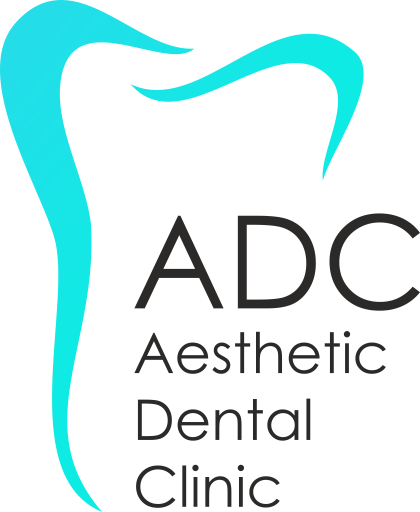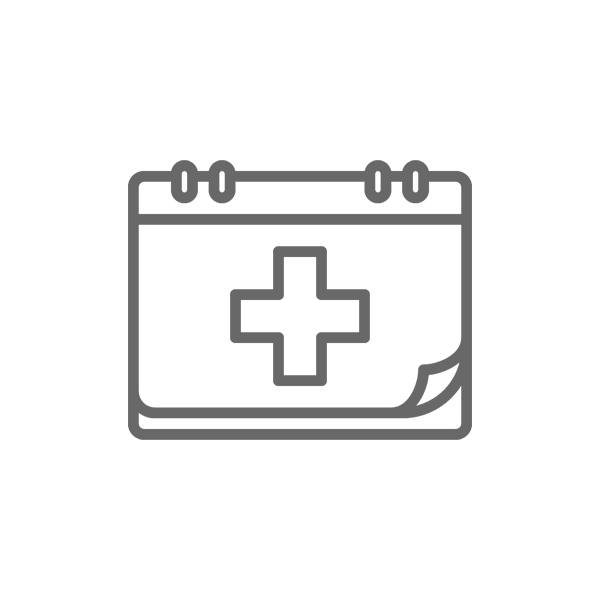Contents
What is Bruxism?
Bruxism is the parafuctional habit of grinding or clenching the teeth, that is, the unconscious, rhythmic and jerking motion of the lower jaw and the muscles that control it, in positions and movements other than normal masticatory movements.
According to modern studies, data from archaeological laboratories and modern dental clinics prove that Bruxism causes severe wear, tear and fracture of teeth.
It is estimated that 1 in 10 adults have problems with Bruxism, making it one of the most common oral dysfunctional habits. In children, the appearance of the Bruxism is even more common.
Bruxism, though it can cause severe pain or difficulty sleeping, can rarely be treated medically.
How do we know if we have if we have a Bruxism? The key questions we need to ask
- Have anyone heard you grinding your teeth? Have you heard yourself?
- When you wake up in the morning, do you feel your jaws clenched or tired?
- Are your teeth or gums sensitive when you wake up in the morning? Do you have a headache when you wake up in the morning?
- Have you noticed grinding your teeth during the day?
- Have you noticed clenching your teeth during the day?
The main symptoms of Bruxism
- Grinding or clenching, which can be strong enough to wake your partner to sleep.
- Teeth that are flattened, broken or loose.
- Worn tooth enamel, exposing the lower layers of your tooth
- Increased pain or sensitivity of teeth.
- Tired or tight jaw muscles or locked jaw that won’t open or close completely.
- Pain in the jaw, limb or face.
- Ear-like pain, although there is no problem with your ear.
- Dull headache.
- Damage from chewing inside your cheek.
- Interruptions in sleep.
An aesthetic problem caused by the roar, which many people do not take seriously, except when the condition has progressed and is now quite evident, is that the teeth have lost their original youthful shape and look older.
The average person touches the teeth of the upper and lower jaw for about 12 minutes a day. People with Bruxism at least double their contact time. As a result, the teeth are older than the patient’s biological age and in advanced conditions the patient’s face appears more “aged”.
Causes of Bruxism
The Bruxism is divided into 2 categories:
Daily Bruxism: occurs when the patient is awake.
Nocturnal Bruxism: occurs when the patient is asleep.
Risk factors:
- Age: It is quite common in young children, but usually passes through adulthood.
- Personality type: aggressive, competitive behavior and hyperactivity increase the likelihood of bergamot.
- Taking medicines and other substances: Bruxism can be an unusual side effect of some psychiatric medications, such as some antidepressants, serotonin reuptake and amphetamines. Smoking, drinking caffeine or alcohol, or using recreational drugs may increase the risk of Bruxism.
- Family members with Bruxism: Sleepwalking tends to appear in families. If you have Bruxism, other members of your family may also have Bruxism or a history of Bruxism.
- Other disorders: Bruising can be associated with certain mental and medical disorders, such as Parkinson’s disease, depression, gastroesophageal reflux disorder (GERD), epilepsy, sleep disorders such as sleep apnea, Attention Deficit Hyperactivity Disorder (ADHD).
People with Bruxism have high rates of anxiety, panic, and sleep-related respiratory disorders.
Diagnosis of Bruxism
To evaluate the extent of Bruxism, your dentist can check for:
- Whether the jaw muscles are tight.
- Obvious dental abnormalities, such as broken or missing teeth
- Other damage to your teeth, underlying bone and inside your cheeks.
Also through your daily routine you can understand some signs:
- A patient’s relative or partner listens to loud sounds from the patient’s mouth. If he sees better, he realizes that the sound comes from the teeth and looks like a crack on each other’s hard surfaces.
- The most common manifestations are tenderness, persistent headaches and sensitive teeth.
- The roar can also cause dental damage, such as dental fillings, Crowns and bridges.
- It can also cause excessive tooth abrasion and in serious cases fractures and tooth mobility. At this stage, the patient should be referred to a specialist as soon as possible.
Treatment of Bruxism
Treating Bruxism and restoring a smile is a quality of life and we should not take it for granted. Quality of life is something to which we all have a right to.
Due to the many causes of Bruxism, there is not one specific treatment that is effective in all cases. However, there are many approaches that have proven effective.
Successful treatment of Bruxism focuses more on limiting rather than eliminating the causes that cause it.
Bruxism – Dental approach
The first appointment includes discussing with the patient and recording history. Then the patient’s orthognathic system is examined, the causes of the problem are diagnosed and the best treatment is selected in collaboration with the patient.
The methods of treatment in the dental office are as follows:
- Anterior guidance jig splint. It is the initial stage for reprogramming the facial muscles and for eliminating tooth abrasion at night. It consists of a small splint that fits in the front 4 teeth and prevents all teeth from touching each other.
- Special nocturnal Occlusal Splints. It is an advanced stage. They are designed to keep the teeth separated so as to avoid damage caused by clencing and grinding. They can be made from hard acrylic or soft materials and fit your teeth up or down. Thus, they do not allow the teeth of the upper jaw to come in contact with the teeth of the lower jaw. The result is to allow the lower teeth to rest on the splint in a specific way to substantially reduce muscle overactivity. At the same time, it protects the teeth themselves as well as dental prosthetic work from fractures and detachments. It is an Occlusal splint that grasps all the teeth of the upper jaw and creates the ideal Occlusion, resulting in the reprogramming of the entire maxillofacial system. It is a treatment that does not interfere with the teeth and is completely reversible.
- Correction of Occlusion. In severe cases – when tooth abrasion has led to tenderness or inability to chew properly, in addition to Occlusal Splints, we can reshape damaged teeth with a fixed prosthetic such as Onlays, Crowns, Bridges etc.
In the event of an advanced stage of Bruxism with “Abrasive” teeth, headaches and other symptoms, the solution proposed is with Occlusal Splints and Occlusal Correction. Other approaches have not proven effective and the patient usually relapses.
Dental treatment methods can also be combined with other approaches, depending on each patient’s case, to maximize results.
Relief of Bruxism
One or more of these approaches can help relieve Bruxism:
- Stress management. If you brush your teeth because of stress, you may be able to prevent the problem with learning strategies that promote relaxation, such as meditation. If Bruxism is related to stress, advice from an authorized therapist or counselor can help.
- Change of behavior. Once you find that you have Bruxism, you can change the behavior and habits of placing your jaw in the wrong position by applying the correct position on the mouth and jaw. Ask your dentist to show you the best position for your mouth and jaw.
- Monitoring. If you want to change your habits, you can benefit from a Bruxism assessment, a method that uses tracking procedures and equipment to teach you to control muscle activity in your jaw.
- Medicines, alcohol, and cigarettes have been shown to be responsible for the appearance of Bruxism. So to begin with, their consumption should be limited. Understandably, this involves changing a patient’s entire lifestyle, which can sometimes be a challenge. Patients receiving medication should speak to their Clinician and discuss alternative therapies.
Medicines
Generally, medicines are not very effective in the treatment of Bruxism, and more research is needed to determine their efficacy. Examples of medicines that can be used for Bruxism include:
- Muscle relaxants. In some cases, your doctor may suggest that you take a muscle relaxant before bedtime for a short time.
- Βοτοχ injections. Injections of Βοτοχ, a form of botulinum toxin, can help some people with severe murmurs not respond to other treatments.
- Medications for stress or anxiety. Your doctor may recommend short-term use of antidepressants or anti-anxiety medications to help you cope with stress or other emotional problems that can cause your Bruxism
Treatment of related disorders
Treatment for related disorders may include:
- If you develop Bruxism as a side effect of a medicine, your doctor may change your medicine or prescribe a different medicine.
- Sleep-related disorders. Treating sleep-related disorders, such as sleep apnea, can improve the nervous system.
- Medical conditions. If the underlying medical condition, such as gastroesophageal reflux disease (GERD), is recognized as the cause. Treating this condition can improve nervousness.
Lifestyle and home remedies
These self-care steps can prevent or help treat Bruxism:
- Reduce stress. Listening to music, warm bathing or exercise can help you relax and reduce the risk of developing a lump.
- Avoid over-stimulating substances at night. Do not drink coffee or caffeine tea after dinner and avoid alcohol in the afternoon, as it may worsen the roar.
- Sleep habits. Good sleep can help to reduce the noise.
- Talk to your partner. Ask him / her if he / she can recognize any cracking or tooth sounds that you can make while sleeping.
- Dental exams are the best way to identify the roar. Your dentist can detect signs of a thump in your mouth and jaw during regular visits and examinations.
Bruxism- Final result
All the discomfort (eg headaches, jaw pain) that appears as symptoms of a roar is reduced, until some of them cease to exist, thereby relieving the patient from the discomfort.
Only patients who receive treatment understand the difference before and after treatment.
If we have restored the aesthetic track with a fixed prosthetic, then we have a new smile so nice that the patient forgets his old smile.
The quality of life is changing for the better.




